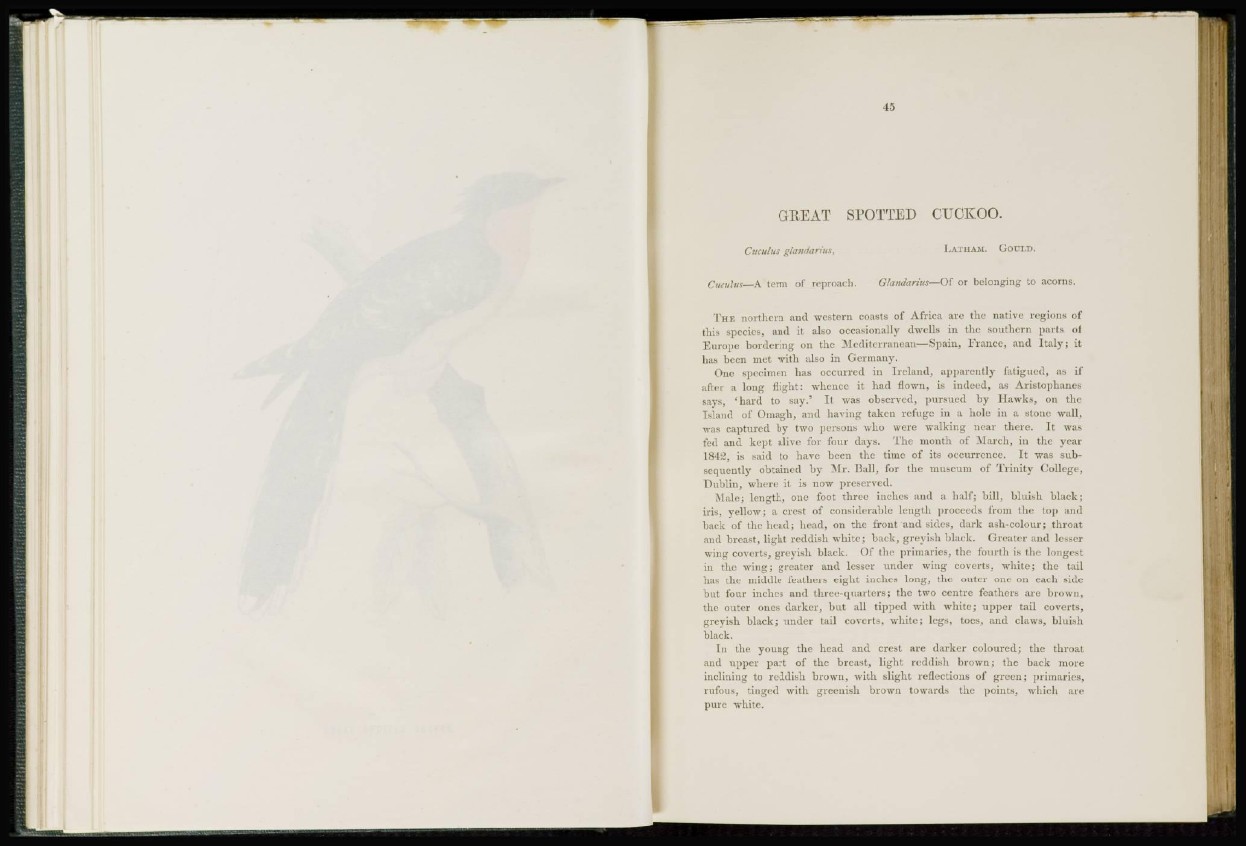
GREAT SPOTTED CUCKOO.
Ciiculus glandarius, LATHAM. GOULD.
Cuculus—A term of reproach. Ghndarius—Of or belonging to acorns.
THE northern and western coasts of Africa are the native regions of
this species, and it also occasionally dwells in the southern parts of
Europe bordering on the Mediterranean—Spain, France, and Italy; it
has been met with also in Germany.
One specimen has occurred in Ireland, apparently fatigued, as if
after a long flight: whence it had flown, is indeed, as Aristophanes
says, 'hard to say.' It was observed, pursued by Hawks, on the
Island of Omagh, and having taken refuge in a hole in a stone wall,
was captured by two persons who were walking near there. It was
fed and kept alive for four days. The month of March, in the year
1842, is said to have been the time of its occurrence. It was subsequently
obtained by Mr. Ball, for the museum of Trinity College,
Dublin, where it is now preserved.
Male; length, one foot three inches and a half; bill, bluish black;
his, yellow; a crest of considerable length proceeds from the top and
back of the head; head, on the front and sides, dark ash-colour; throat
and breast, light reddish white; back, greyish black. Greater and lesser
wing coverts, greyish black. Of the primaries, the fourth is the longest
in the wing; greater and lesser under wing coverts, white; the tail
has the middle feathers eight inches long, the outer one on each side
but four inches and three-quarters; the two centre feathers are brown,
the outer ones darker, but all tipped with white; upper tail coverts,
greyish black; under tail coverts, white; legs, toes, and claws, bluish
black.
In the young the head and crest are darker coloured; the throat
and upper part of the breast, light reddish brown; the back more
inclining to reddish brown, with slight reflections of green; primaries,
rufous, tinged with greenish brown towards the points, which are
pure white.